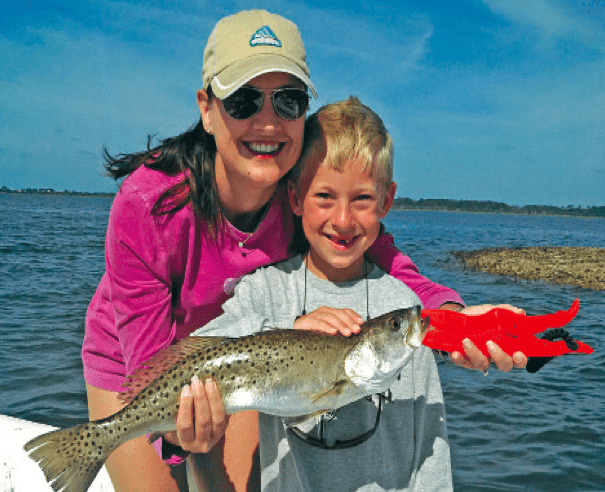[dropcap]A[/dropcap] recent study by the Recreational Boating & Fishing Foundation (RBFF) and the Outdoor Foundation reveals fishing and boating are among the most important ‘gateway’ activities that often lead people, especially youth, to pursue other recreation experiences. And for the first time in several years fishing gained more participants than it lost— largely due to women taking up the sport.
The study found that fishing remains one of the most popular recreational activities in the country with more and more people trying out the sport every day. According to the 2012 Special Report on Fishing and Boating, fishing added a net total of 800,000 new par- ticipants, bringing the total of Americans who fished to 46 million, or 16.2 percent of the population. Females and young children added the most new participants, showing unprecedented interest in this typically male-dominated sport.
“Families are searching to squeeze in quality time with each other whenever and wherever they can. Getting outdoors to fish and boat is a great way to do this,” said Leslie Nagao, RBFF Vice President of Marketing and Communications. “That’s one reason we believe women and younger parents are taking up the sport in growing numbers.”
“Increased participation leads to increased fishing license sales and boat registration renewals, both key sources for funding state fish and wildlife conservation, and boating infrastructure programs,” added Nagao. “We hope to keep the momentum going so the joys of fishing and boating can be experienced by everyone for generations to come.”
KEY STUDY FINDINGS
Fishing Participation
• In 2011, 46.2 million Americans participated in fishing (an increase from 45.4 million in 2010).
• While eight million participants stopped fishing, 8.8 million former or new participants joined the sport, netting an increase in overall participation.
• Although the number of fishing par- ticipants increased, the number of fishing outings decreased (average of 18.2 days fishing in 2011 compared to average of 20.4 days fishing in 2010).
• Females and youths ages six to 12 added the most new fishing participants.
• Adults 18 and older with children in their households participate in fishing at higher levels than adults without children.
• Findings also indicate that fly fishing has the greatest amount of interest among newcomers, while saltwater fishing holds the interest of partici- pants from youth through adolescence.

